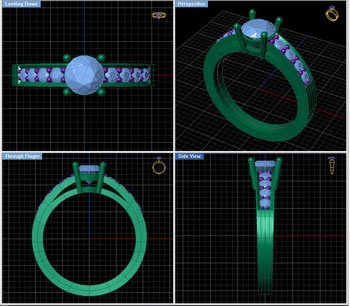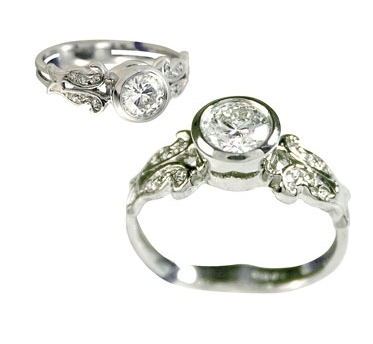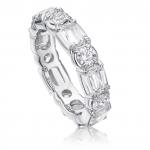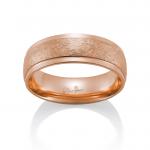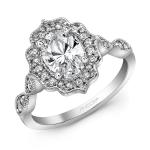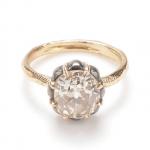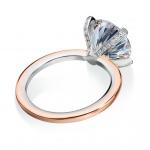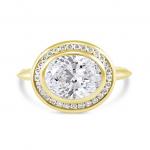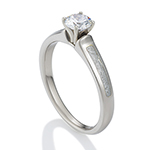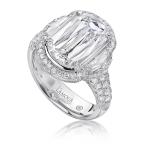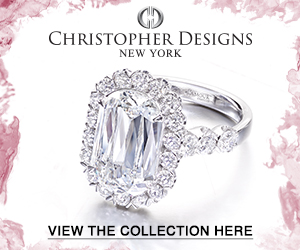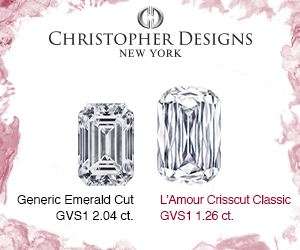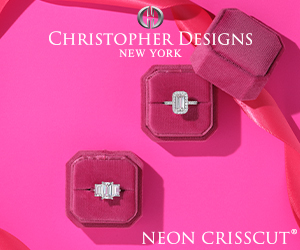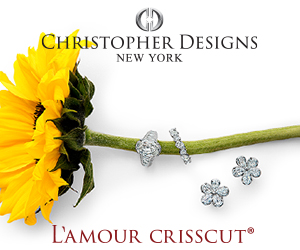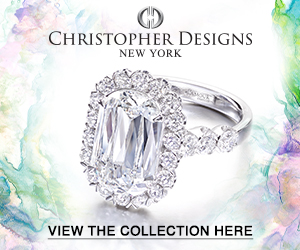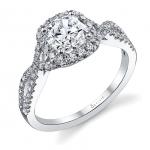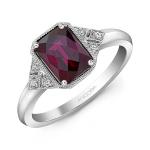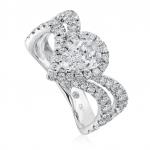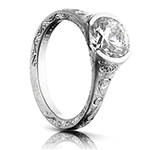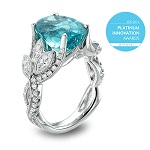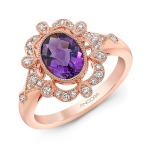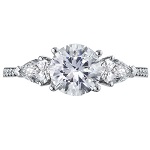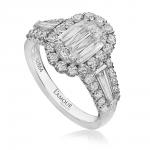 We live in a world of acronyms and computer induced words! The fine jewelry industry also has its fair share. As trends and manufacturing process evolves, new words appear. Sylvie Levine of Sylvie Collection translates jewelry-speak into real-speak by demystifying some of the most commonly used and new terms that fine jewelry consumers need to understand today as they shop for that all important diamond engagement rings!
We live in a world of acronyms and computer induced words! The fine jewelry industry also has its fair share. As trends and manufacturing process evolves, new words appear. Sylvie Levine of Sylvie Collection translates jewelry-speak into real-speak by demystifying some of the most commonly used and new terms that fine jewelry consumers need to understand today as they shop for that all important diamond engagement rings!
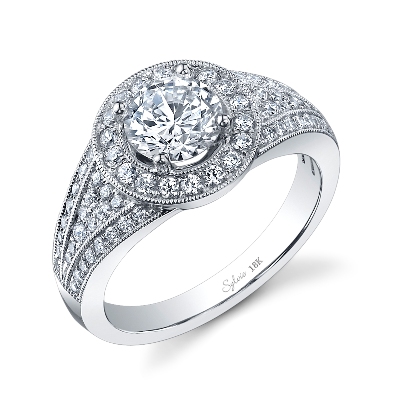
Milgrain
Milgrain (also spelled millgrain) is inspired from the French word meaning a thousand grains. Milgrain work is a decorative accent that is reminiscent of antique jewelry. Tiny beads set in a row with a high polish finish create a precious and special looking jewel. This technique is used predominantly today for rings, notably engagement rings. Milgrain decoration began to appear in jewelry as far back as 5000 B.C. in India and China. A special engraver’s knurling tool helped to create the effect for many years. Today, milgrain decoration can be done on computers with 3D modeling computer software. Milgrain diamond setting is another variation of milgrain detail whereby stones are set into the milgrain bead in place of prongs. Sylvie Collection treasures this technique and uses it often in the designs since so many of their brides love something-old looking! Other equally beautiful antique-inspired details include engraving, scroll-work and filigree.
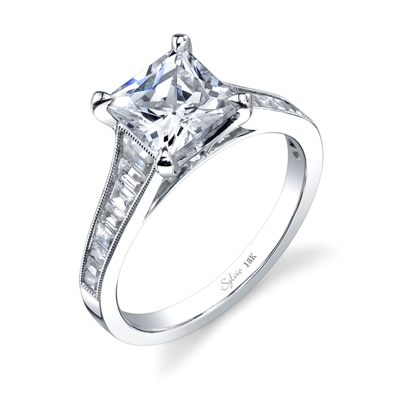
Baguette
The baguette cut is a step-cut into which diamonds and colored gemstones are crafted. The slender, rectangular baguette (derived from the French word for a long slim loaf of bread) is the most common kind of step cut today. The baguette has seen a recent resurgence ever since Brangelina became engaged with a 6-carat emerald (another step-cut) and baguette diamond ring estimated to be worth a cool $250,000. This step cut was once used predominantly as an accent stone to flank a ring’s larger center stone. Because this cut is generally very shallow, it tends not to refract and reflect light as readily as a brilliant cut round diamond. Levine says, “This cut accentuates a diamond’s clarity (even slight flaws are highly visible), whiteness, and luster which is why we love it!”
CAD
Computer-aided design (CAD) has changed the way jewelry designers conceptualize, design and create jewelry! The program, which was invented by Autodesk, Inc., was meant to create technical drawings with the use of computer software. Jewelry prototypes and models can be made in 2-D and 3-D eliminating the need for hand-drawings. Initially released in 1982, the program CAD has helped revolutionize the jewelry industry as well as many others including manufacturing, building, construction, engineering, and entertainment. Jewelry designers can go from an idea to finished piece of jewelry in just a few clicks. Although the program is quite complex, jewelers who have mastered it can create life-like on screen images for prospective jewelry buyers making custom jewelry design easier and more fun than ever.
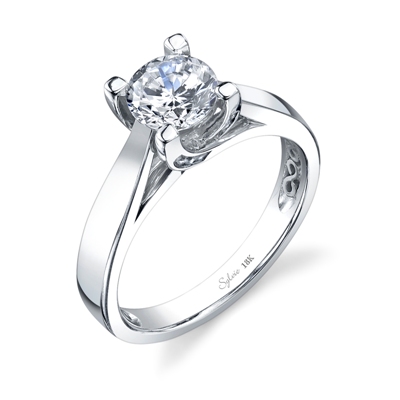
Gold
Gold has been used to adorn people long before written recorded history! Today, gold still continues to be one of the most important precious metals with regard to jewelry consumption. In fact 50% of new gold produced is used jewelry! Sylvie Levine says to look for the karat mark, which will tell if the piece is real gold as well as the percentage of pure gold it contains. “We work with both 14K and 18K gold and can customize any one of our styles in white, yellow or rose gold,” says the designer. Pure 24K gold is beautiful but soft so combining it with other alloys helps to increase the strength-ensuring that the jewelry last for generations to come. Common alloys include copper, silver, nickel and zinc to help give strength and durability. 18K gold is 75% gold; 14K is 58.3%; and 10K is 41.7%. In the U.S. jewelry must be at least 10K to be legally sold as gold.
Photo via Luxurypalladium.com
Palladium
Palladium is the newest metal on the fine jewelry scene. Important characteristics that make palladium appealing to are its natural whiteness, the fact that it is lightweight and it is affordable! In the current market, palladium costs less than platinum or gold. Palladium can also save you money over the long term since it does not tarnish like gold. Jewelry designers like using this metal to create jewelry because of its low density which allows larger jewelry designs to be created without the cost! According to the website www.luxurypalladium.com, palladium is from the same family of precious metals as platinum, sharing its strength and hypo-allergenic properties. Palladium is pure and will not cause allergic reactions for most. Those with sensitive skin will rejoice with another metal option from which to choose.











